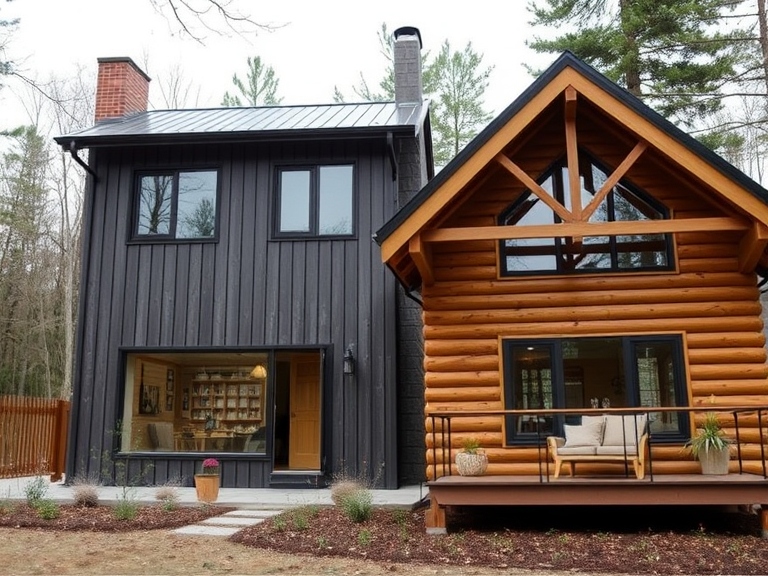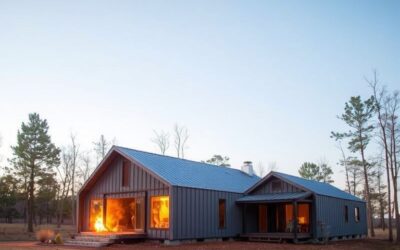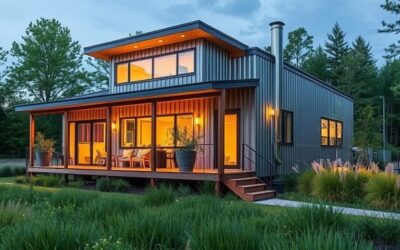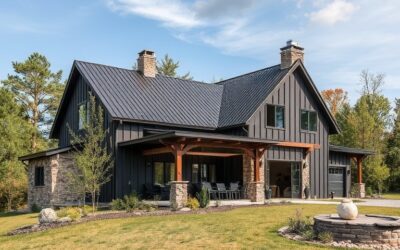Planning your dream home? Choosing the right material is key to building a space that lasts. Steel and wood are top contenders, each with unique benefits and challenges. Understanding the differences between them can help you decide which one fits your needs best. Let’s dive into why some people prefer steel homes while others stick with the traditional wood.
Steel homes are gaining popularity because of their strength and longevity. Unlike wood, steel doesn’t rot or warp. It can withstand extreme weather conditions without getting damaged. This makes steel a solid choice for those looking for a durable and long-lasting home. Plus, steel homes require less maintenance over time, saving you money and effort.
On the other hand, wood homes have a classic charm. Many people love the traditional look and feel of wood. It’s a natural insulator, keeping your home warm in the winter and cool in the summer. Wood is also a renewable resource, which makes it an eco-friendly option. However, wood homes can be more prone to issues like termites and moisture damage. Comparing these differences can help you decide which material is right for your home. We’ll explore these aspects in more detail to guide you in making the best choice.
Durability and Strength Comparison
When it comes to durability and strength, steel and wood are vastly different. Steel’s unmatched strength makes it a champion against hurricanes, earthquakes, and other natural disasters. It doesn’t warp, crack, or split over time. This makes steel homes an excellent choice for areas with harsh weather conditions. Steel also resists pests like termites, which can cause major damage to wood structures.
Wood, while charming, is vulnerable to rot, decay, and pests over time. Over time, wooden beams can weaken, especially if exposed to moisture. Regular maintenance is required to keep wooden homes in good shape. Wood is also more susceptible to fire compared to steel, which doesn’t burn. This difference in fire resistance can be crucial when deciding which material to use.
Another point to consider is longevity. Steel homes can last for many decades with minimal upkeep. The durability of steel translates to fewer repairs and replacements, ensuring your home remains solid for a long time. While wood has a warm, natural appeal, it may not offer the same lasting strength as steel.
Environmental Impact
The environmental impact of building materials is an important factor for many homeowners. Steel and wood both have pros and cons in this area. Steel’s recyclability makes it a sustainable option for eco-conscious homeowners., making it a sustainable choice for those looking to reduce their environmental footprint.
As a renewable resource, wood has eco-friendly appeal when sourced responsibly. Trees can be replanted, and forests managed sustainably can provide an ongoing supply of building material. However, the process of harvesting and processing wood can contribute to deforestation and habitat loss if not done responsibly.
In terms of energy efficiency, wood has natural insulating properties that help keep homes warm in the winter and cool in the summer. This can reduce the need for additional heating and cooling, saving energy. Steel, while not a natural insulator, can be paired with high-quality insulation to achieve similar energy efficiency. Considering these factors can help you make an environmentally responsible choice between steel and wood for your home.
Cost and Maintenance Differences
Cost is often a big deciding factor when choosing between steel and wood homes. Wood homes typically have a lower upfront cost. The materials are more readily available, and labor costs can be less intense. However, the long-term costs of maintaining a wood home can add up. Frequent repairs, termite treatments, and weather-related damage can make owning a wood home more costly over time.
Though steel homes have higher upfront costs, their durability means fewer repairs and lower lifetime expenses. Steel’s durability means fewer repairs and maintenance issues. Since steel doesn’t suffer from rot, pest damage, or warping, you’ll save money on upkeep. This can make the overall lifetime cost of a steel home lower despite its higher starting price.
In terms of maintenance, steel requires less frequent attention. A simple cleaning and occasional inspections are usually enough to keep a steel home in good shape. Wood homes demand constant maintenance—pest treatments, sealing, and repairs to combat wear. These ongoing maintenance tasks not only cost money but also require time and effort, which is something to consider for busy homeowners.
Customization and Design Flexibility
One of the key benefits of choosing steel or wood is the customization and design flexibility each material offers. Steel’s strength supports innovative designs, from open layouts to sleek modern architecture. Because of steel’s strength, it can support larger open spaces and innovative architectural features. This opens up a world of design possibilities that might not be feasible with traditional wood construction. You can achieve modern, sleek designs that are both aesthetically pleasing and structurally sound.
Wood’s timeless charm lends itself to intricate designs and cozy aesthetics. It’s easier to work with for certain design aspects like intricate woodwork or classic features such as exposed beams. Wood can also be easily modified during construction, allowing for changes in the design without significant inconvenience or cost.
Customization options for finishes are abundant with both materials. Steel homes can be paired with various cladding materials for a unique exterior look and combined with high-quality insulation to enhance energy efficiency. Wood homes can be painted or stained in numerous colors and styles to match your personal taste. Understanding the customization options available with each material can help you create a home that not only meets your functional needs but also suits your aesthetic preferences.
Conclusion
When deciding between steel and wood for your home, consider all the factors that matter to you. Durability, environmental impact, cost, and customization all play crucial roles in your decision-making process. Steel homes deliver durability, minimal maintenance, and cutting-edge design possibilities. Wood homes provide a traditional feel, natural insulation, and have a renewable aspect.
At Wink Panels LLC, we specialize in all-steel construction homes that combine durability with design flexibility. Our custom steel homes are built to last and can be customized to fit your style perfectly. Ready to make the choice between steel and wood? Let Wink Panels LLC guide you toward the perfect home. Contact us today to start building your dream space!




